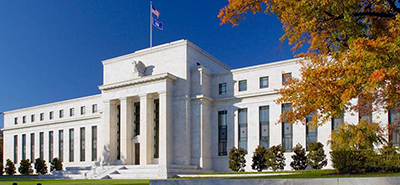
Fed Raises Key Interest Rate by 25 Basis Points

(Federal Reserve headquarters, Washington, D.C.)
The Federal Reserve’s Federal Open Market Committee increased short-term rates at its July meeting, responding to high but moderating inflation and a job market that remains quite strong.
The FOMC increased its target range for the federal funds rate by 25 basis points to a 22-year high.
MBA Senior Vice President and Chief Economist Mike Fratantoni noted both inflation and the job market are now moving in a direction that could allow this hike to be the Fed’s last for this cycle. “We expect that to be the case, but for the Fed to hold off on any rate cuts until we are well into 2024,” he said.
“While the market for new home sales has recovered considerably over the past few months, the pace of overall housing market activity remains quite slow,” Fratantoni said. “Although the lack of inventory remains a constraint, housing affordability challenges continue to delay many potential buyers from entering the market. We do expect mortgage rates to trend down once the FOMC clearly signals that they have reached the peak for this cycle, as the reduction in uncertainty with respect to the direction of rates should narrow the spread of mortgage rates relative to Treasury benchmarks.”
Michele Raneri, vice president and head of U.S. research and consulting at TransUnion, Chicago, said the mortgage market–which will likely see another uptick in interest rates–may remain slow as many consumers may hold off on making a home purchase in hopes that interest rates stabilize and possibly come down soon thereafter. “It remains to be seen whether cooling inflation may help motivate consumers who had been holding off due to increasing cost of living expenses,” she noted.
The full FOMC statement:
Recent indicators suggest that economic activity has been expanding at a moderate pace. Job gains have been robust in recent months, and the unemployment rate has remained low. Inflation remains elevated.
The U.S. banking system is sound and resilient. Tighter credit conditions for households and businesses are likely to weigh on economic activity, hiring, and inflation. The extent of these effects remains uncertain. The Committee remains highly attentive to inflation risks.
The Committee seeks to achieve maximum employment and inflation at the rate of 2 percent over the longer run. In support of these goals, the Committee decided to raise the target range for the federal funds rate to 5-1/4 to 5-1/2 percent. The Committee will continue to assess additional information and its implications for monetary policy. In determining the extent of additional policy firming that may be appropriate to return inflation to 2 percent over time, the Committee will take into account the cumulative tightening of monetary policy, the lags with which monetary policy affects economic activity and inflation, and economic and financial developments. In addition, the Committee will continue reducing its holdings of Treasury securities and agency debt and agency mortgage-backed securities, as described in its previously announced plans. The Committee is strongly committed to returning inflation to its 2 percent objective.
In assessing the appropriate stance of monetary policy, the Committee will continue to monitor the implications of incoming information for the economic outlook. The Committee would be prepared to adjust the stance of monetary policy as appropriate if risks emerge that could impede the attainment of the Committee’s goals. The Committee’s assessments will take into account a wide range of information, including readings on labor market conditions, inflation pressures and inflation expectations, and financial and international developments.
Voting for the monetary policy action were Jerome H. Powell, Chair; John C. Williams, Vice Chair; Michael S. Barr; Michelle W. Bowman; Lisa D. Cook; Austan D. Goolsbee; Patrick Harker; Philip N. Jefferson; Neel Kashkari; Lorie K. Logan; and Christopher J. Waller.
